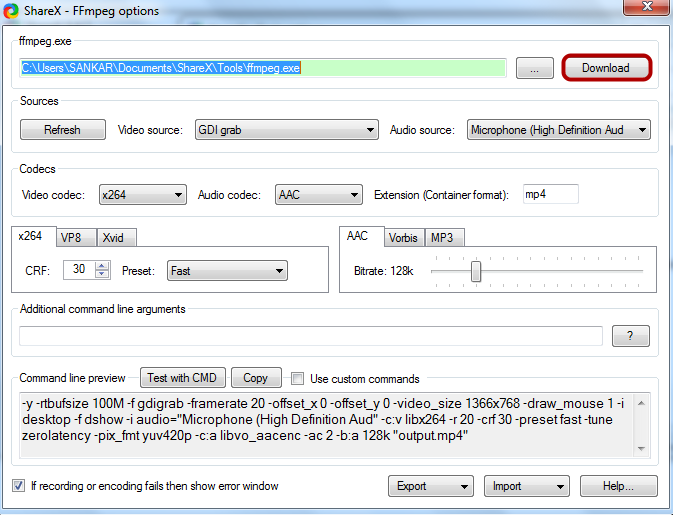

There might be other format-specific tweaks, but I wouldn't expect significant speedups from those compared to the methods listed above. With -flags2 fast and -b 100k and -g 0: 12s (the output looks terrible)


Here are the complete results from my quick testing, time is real time used for encoding:īaseline, 27M MOV to mp4, bitrate ~900k: 97s There was much less compression, 63% the original size versus 25% with default settings, but the quality remains good unlike low-bitrate encodings. In testing, the 97-second encode finished in 20 seconds with -g 0. You can use ’-me zero’ to speed up motion estimation, and ’-g 0’ to disable motion estimation completely (you have only I-frames, which means it is about as good as JPEG compression). If your computer is not fast enough, you can speed up the compression at the expense of the compression ratio. In your case, coming from images, you can probably get a major speedup from turning off motion estimation as mentioned in FFmpeg's encoding tips: The output video was much smaller, and the quality was noticeably worse. In this paper, we show that motion vector predictor (MVP) from neighboring sub-blocks is more accurate than MPEG-2 MV as search center when MPEG-2 MV field is non-smooth. In testing just now, a video that takes 97 seconds to encode with default settings, bitrate ~900k, took less than half that with the bitrate dialed down to 100k. Abstract: In MPEG-2 to H.264 transcoding, MPEG-2 motion vector (MV) is often reused as search center to simplify H.264 motion estimation (ME) module. The major "knob" you change the quality/encoding speed balance for any format is the bitrate.


 0 kommentar(er)
0 kommentar(er)
